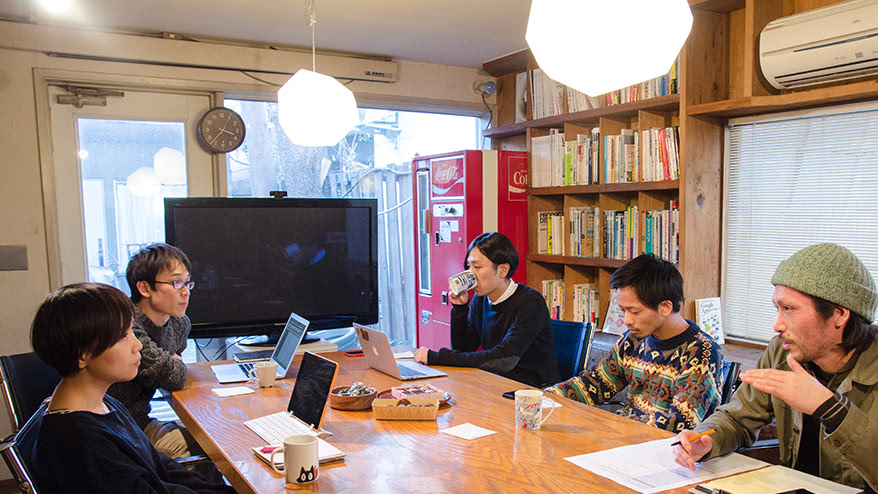Our design department consists of six designers with different backgrounds and skills, and we all use our own strengths to explore web design every day as we create our work.
But production can sometimes be a solitary experience. Even if each of us has our own ideas about design, it's rare for all the members of the club to discuss them together.
So we decided to get serious and hold a design department roundtable. The first meeting was centered on "what designers think before they take action," and the discussion expanded to include topics such as "listening," "the role of the designer," and "design concepts."

The design team members gathered in the North Building conference room where the talk was held. From left: Nakaniwa, Onogi, Imai, Kamimori, and Shiba.
INDEX
Exploring the "play" of design
-About interviewing clients-
-When you receive a design request, you probably ask the client or planner questions, but what are the key points you pay attention to?
Ono : Maybe it's because I'm the manager, but I first check the cost. Once I know the cost, I can think about the scope of production. Next, I check the client's industry. Depending on the industry, I can imagine the purpose of the site and the effect they want to achieve.
I also ask them what problems they are currently facing. As I confirm the problems, I come up with proposals and designs to address them.
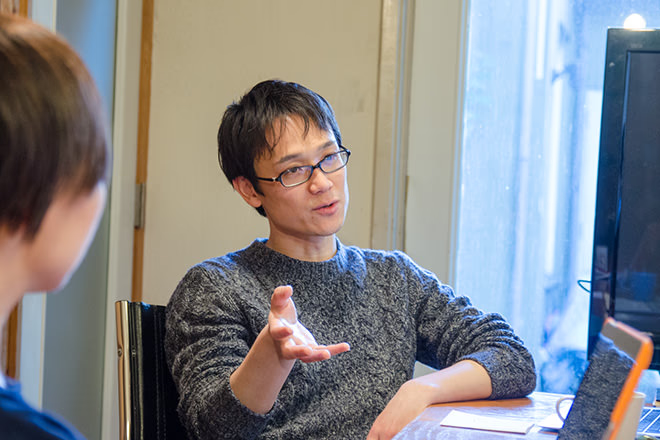
Yu Onoki. Head of the Design Department. Father of two children. After studying electronic engineering at university, he became a web designer, a job that allowed him to use his illustration skills. He joined Monosus shortly after it was founded, and this is his ninth year.
Imai: When I listen to what you have to say, I have the design image matrix in my head.
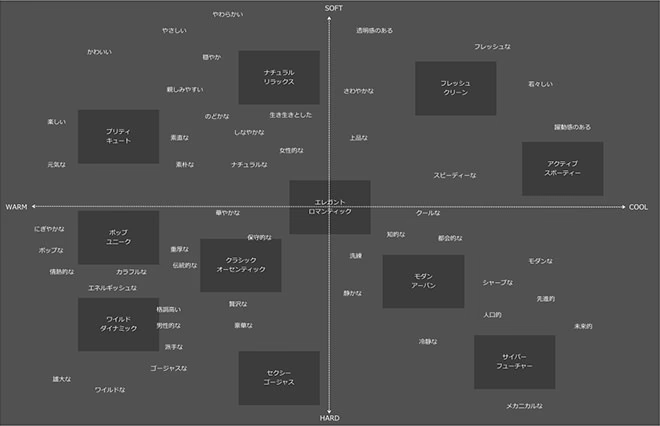
Image matrix to help determine tone and manner before designing
Depending on the client, they may only have a vague image in mind, such as "cool," so rather than trying to draw out keywords from them, I pick out reference sites by categorizing the websites I regularly see and remember into a matrix in my head.
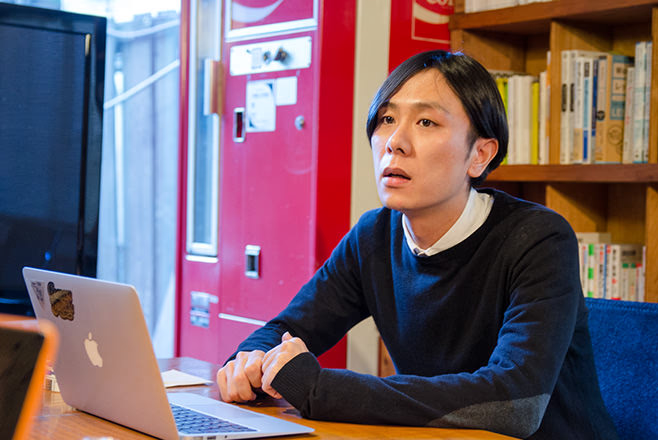
Tomoya Imai. He was one of the original members of Monosus after Onogi. He is knowledgeable about the latest designs and apps. He started out in graphic design, and after learning about video, he moved into the world of the web, which he was interested in. He has been a designer for 10 years.
Uemori: In my case, I listen carefully to see if what the client wants is clear or vague. Based on that, I think about the extent of what I can propose and where I can add some "flexibility."
-What do you mean by "can I play or can't play"?
KamimoriIf the request is vague, we suggest the latest trends. It's a matter of whether we have a lot of elements to offer or not.

Taku Uemori. In his previous job, he designed magazines at an event company. He was convinced that the next era would be the Web, so he joined Monosus. He has been with the company for three years.
I think that playing with Shinba is a space that can only be created by having a logic that can explain the design in detail. For example, once the design has been solidified to a certain extent, you can add a little movement or twist the color combination to further brush up the design.
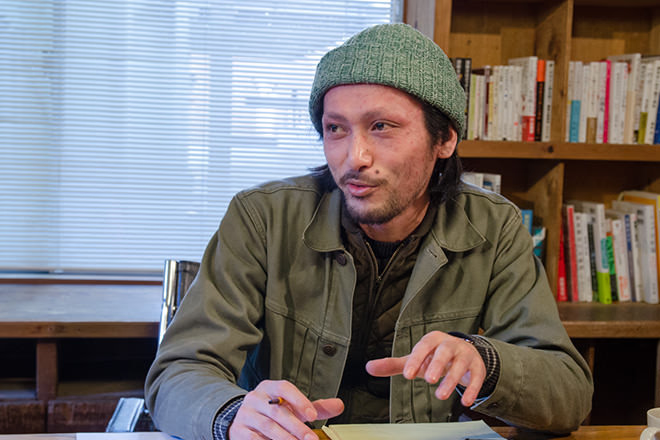
Shinba Masutoshi. He taught himself graphic software while working in the apparel industry, and has been receiving design requests from acquaintances for about 10 years. He has been doing web design for about 3 years since joining Monosus. He is the writer of this article.
Imai: After satisfying the basic requirements, a proposal that goes beyond the client's expectations may be considered "fun". If you add some fun to a well-designed UI/UX for accessing information, the client will find it quite interesting.
In order to leave a strong impression on visitors to the Shinba site, rather than just providing them with information, it may be necessary to provide some "fun" to the site.
Onogi: Simply wrapping it up nicely according to requests won't make it memorable. So, maybe the "game" is to think about what parts will be memorable.
How extensive is a designer's work?
~The role of the designer~
- Before making design requests, clients often talk about things one layer above design, such as attracting customers, recruiting, and branding, but what is it that a designer can do?
Imai: For example, the question is "How can we increase sales?" and how can we use design to solve the problem.
Onogi: In the end, I think having a cool design and whether or not it achieves the client's goals are two different things. Just because a website has a good design doesn't necessarily mean it will attract more customers. I think it can only be achieved by combining marketing, planning, SEO, and other factors comprehensively. When designing a website, I think it's important to think about what the client is aiming for.
It's important to come up with a plan to solve the problem rather than jumping straight into the design of the courtyard . I think the job of a designer is to put that plan into a concrete form.
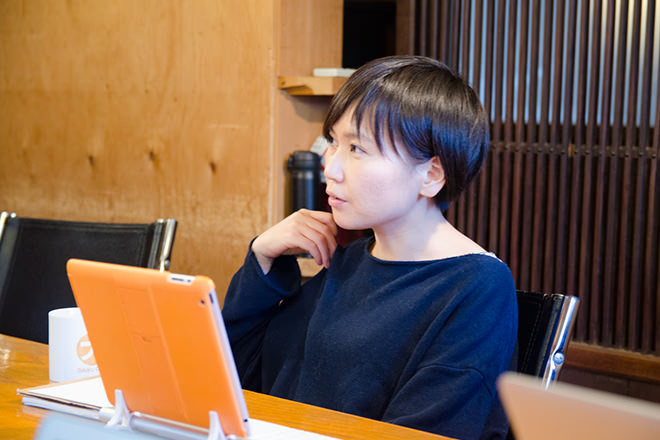
Yoshiko Nakaniwa. Designer and editor-in-chief of the Monosas website. She started learning design after working as a flasher at a web production company 10 years ago. Monosas is in its sixth year this year.
Shiba: When I design a website, I sometimes imagine it as a store. The homepage is like an entrance that determines whether or not it's a building you want to enter. For example, when going to a clothing store on the fifth floor, people who want to look around take the escalator, people who want to stop by the restroom take the stairs, and people who know exactly what they need take the elevator. I think that can also be applied to the flow of a website.
I think that creating a courtyard website is similar to creating a real place. That's why I also thought that websites are similar to architecture. For example, if you're building a house and you have a vague ideal but don't know what to choose, it's fun when an architect gives you specific suggestions like, "How about a kitchen like this?" or, "It would be nice if the living room was this big." I think web design suggestions are similar. A designer might be like a virtual architect.
Is it necessary to express design in words?
About the design concept
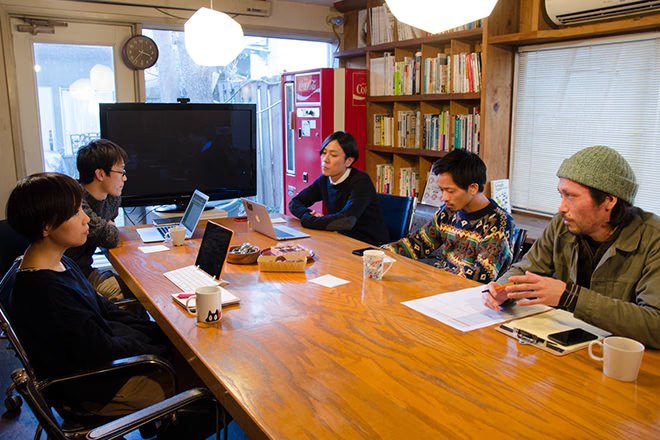
-Once you create a design, you have the opportunity to explain it to people from various backgrounds, but do you think it's necessary to have a design concept before production?
Onogi: If you want to become an art director in the future, you should be able to formulate a design concept. The job of an art director is to put the concept into words and communicate it to the client in one sentence.
It is impossible to create a design without a courtyard concept. Either way, I try to be able to explain the logic of the design in words.
OnogiWhenever there is some element of branding involved, it is very important to create a concept. For example, when creating the Tokyo Institute of Technology website, we decided on the use of the logo, typeface, photos, design, and the direction of the content based on the design concept we came up with at the beginning. As the planning progresses, it is possible to deviate from the original purpose, so a guiding concept is essential.
In a competition for a website renewal, such as "we want to revamp our old site," where there isn't much information about the other party's requests or image, we sometimes choose not to create a concept, but instead base it on a mainstream design and add predicted proposal points.
Onogi: There have been many cases in the past where it was better not to decide too much at the competition stage. A concept may not always be necessary.
By the way, Mr. Imai always incorporates new things. I will incorporate old things if necessary to suit the customer, but Mr. Imai's design always seems to have the intention to clear things with new things. How do you solidify the logic of a concept in your mind?
Imai: When I propose something to a client, I'm motivated by coming up with something "out of the ordinary." I want to stand out by proposing something that is a little different from what other companies are doing, while still sticking to the basics.
After the roundtable discussion

There were so many different opinions exchanged about the themes of this session, "client interviews," "the role of the designer," and "design concept," that it would be endless if we started talking about them. By hearing each other's opinions and experiences, I feel like I was able to broaden my horizons and find many hints that I can apply to my next project.
Furthermore, although each person's path differed based on their experience and sensibilities, we found that they all shared the desire to "create a website that will make their clients happy."
In the next Design Team roundtable, we'll be discussing more practical design topics. See you next time!
